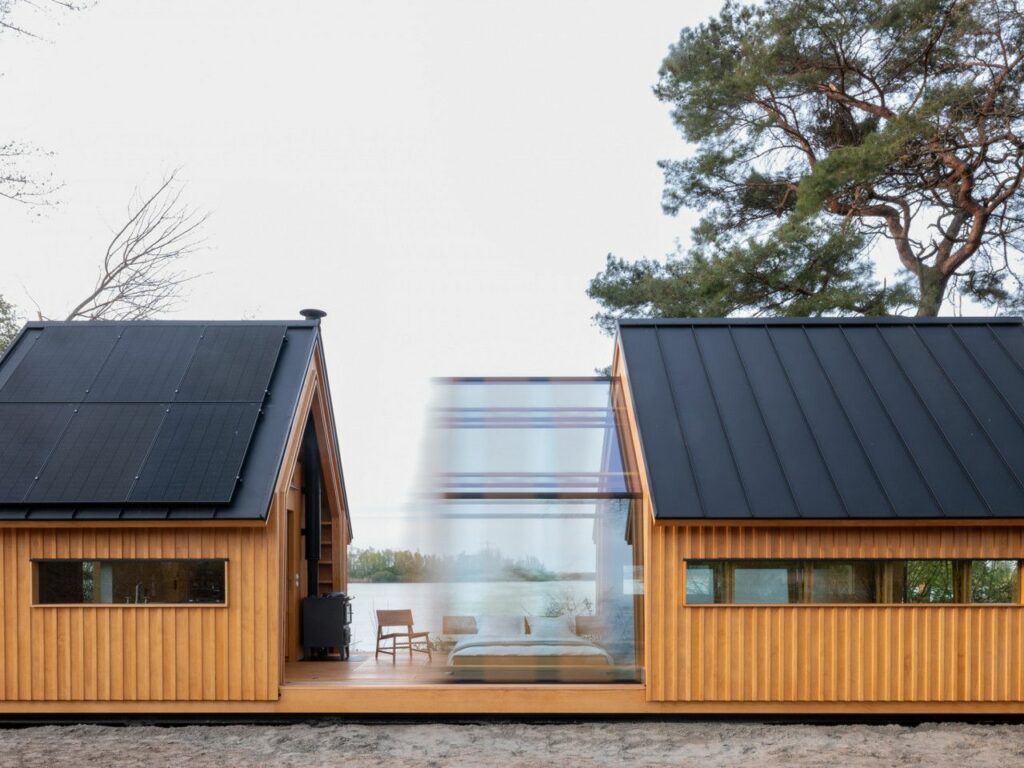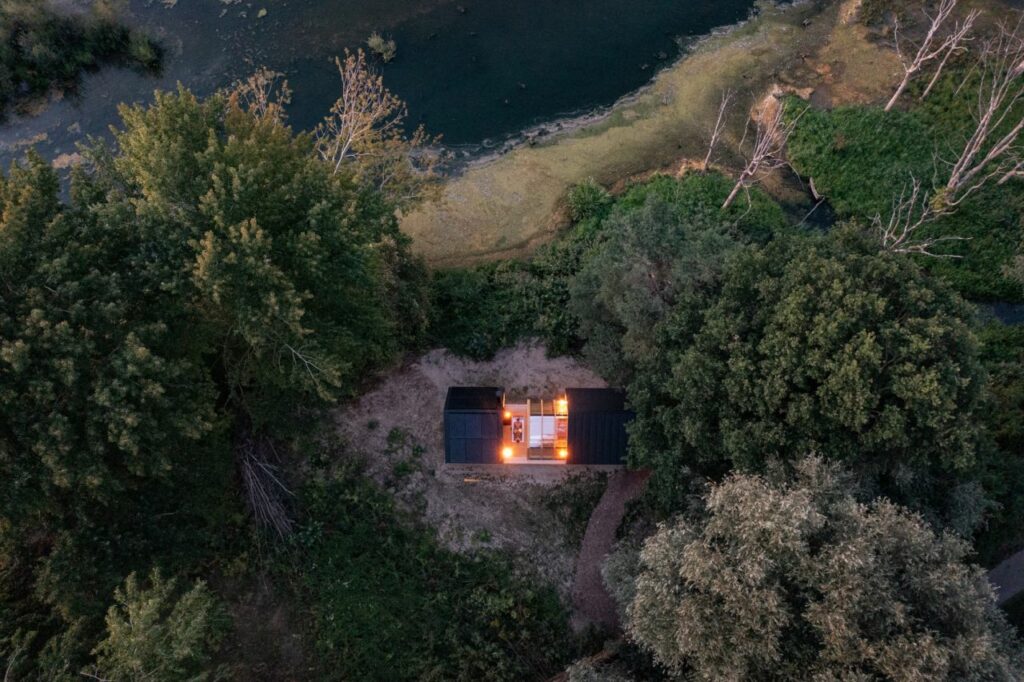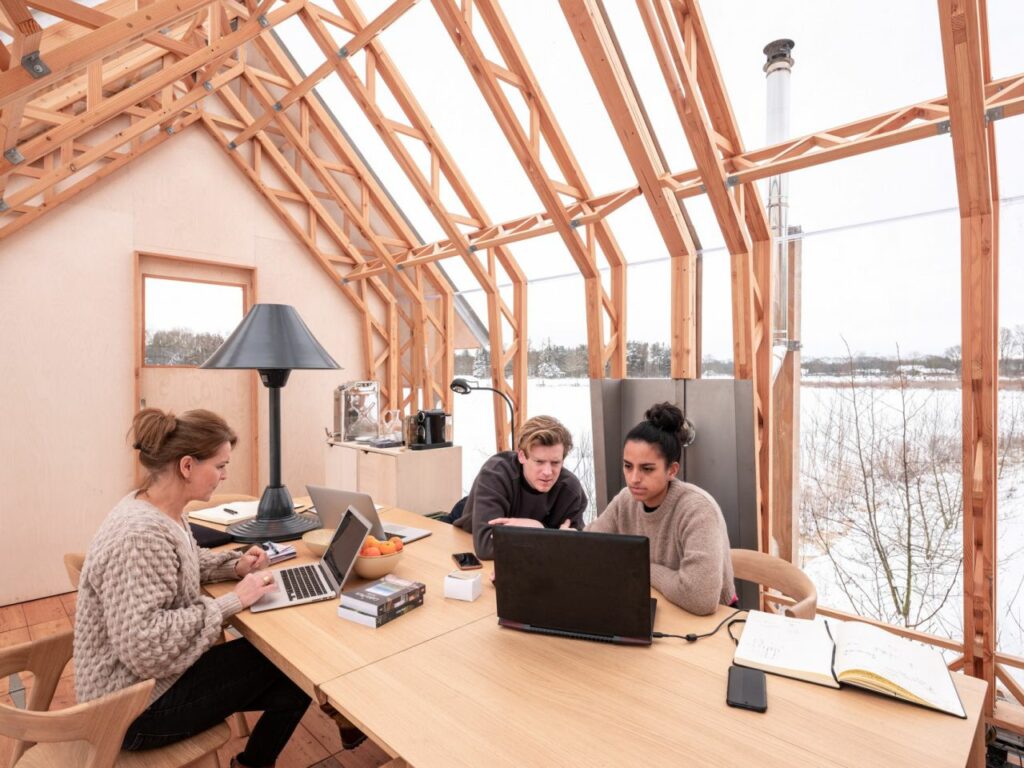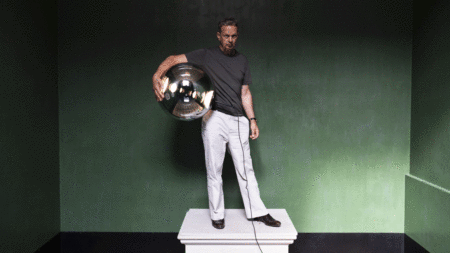Everyone has a story to tell and I like to pen the most beautiful ones. Today’s tale is that of Caspar Schols. A story of grit and determination that propelled an average lawn caretaker, dealing with dyslexia, to design an expandable cabin and win a prestigious award at the World Architectural Festival (WAF).
Caspar Schols’ creation, the ‘ANNA Stay’ was recently conferred the World Hotel Building of the Year 2022 award at the WAF in Lisbon, Portugal. The beautiful wooden cabin features two sliding shells that extend to reveal a glass-covered inner shell or an open-air lounging. The expanding architecture isn’t a novelty, but Caspar’s adaptation was fascinating enough to rattle the architectural community.
Behind all the name and fame he has recently amassed, “ANNA is a result of a struggle to reconnect to reality after my father died at a young age,” Caspar Schols tells us in an exclusive chat. But it’s not just the father’s loss that left a lasting impact on his psyche. Caspar has been dealing with dyslexia since childhood. However, the learning disorder was never much of a trouble to the Dutch designer.
“I have learned that it makes me good at certain stuff and bad at other stuff like spelling and keeping track of left and right. But apparently, for spacial understanding and mathematics it can actually be helpful as my brain makes a certain connection that other brains don’t,” he states.
Homecrux decided to have a more inclusive discussion with the Netherland-born designer. In the interview, Caspar opens up on his childhood, bearing his father’s loss, dealing with mental health issues, and battling all the odds to focus on his dream project the ANNA Stay.
Homecrux (HC): Cabin ANNA has recently been conferred the prestigious World Hotel Building of the Year Award 2022. How big a moment is this in your career?
Caspar Schols (CS): This is massive, I still can’t believe it. Six years ago, after graduating in physics, I started digging holes in my mother’s backyard and was struggling to build a sliding cabin, which most people thought was quite a ridiculous idea. Now we are ten people who worked (and are still working) day and night to develop a highly sustainable cabin that allows you to connect and live in a new way with nature. The fact that this is recognized by the World Architecture Festival (WAF) feels a bit like being part of a romantic Hollywood film.
HC: We are inquisitive about your experience designing ANNA Stay.
CS: Well, I had just finished my master’s degree in ASML chip manufacturing, spending 90% of daylight time in a cleanroom protected by a massive anti-dust suite and surrounded by incredible machines. That was a super interesting experience, but after a year I was craving to be outdoors among things I could intuitively understand (not just by doing next-level mathematics).
When my mother asked me to help her find a prefab cabin to buy for her plot of forest in the South of the Netherlands I asked her if she would allow me to take some months off before starting my career and design and build the cabin for her from scratch. She immediately agreed (I still think mainly because it meant me moving back home again for a while, but it was the start of an incredible adventure).
I learned Sketchup, drew for two months with different iterations, and when both of us were satisfied I started building. On the weekends sometimes my brothers or friends would join me to help. It was a struggle. But incredibly fun and rewarding.

HC: What makes ANNA Stay different from other cabins? How did the idea of protective sliding shells come to be?
CS: You never know where ideas really come from but looking back, I believe ANNA is a result of a struggle to reconnect to reality after my father died at a young age. He was 55 years old and I was 21. Initially, I was sad but it didn’t seem to affect my life too much. Just a year or two later, after my father had died, I started to spiral down and experience heavy dreams and panic attacks at night. I dreamt again and again how I was floating lightyears away from planet Earth, just by myself, with no way to ever get back home.
As I did not want to take any pills to ‘cure’ myself, there was only one way out. I withdrew into nature (Sweden) for five weeks in solitude. There, wandering through the forests and bathing in the lakes, I rediscovered the magic of life and living in the wilderness. I calmed down. And somehow without words nature gave me the answers. Or at least, told me that all was okay. I still couldn’t reason what had happened and why my dad would not ever come back.
But things started to make sense again. When a year later my mother, who was struggling and grieving in her own way, asked me to build the cabin, it was intuitively clear to me that it had to be a place that would ground her, my family, and myself. Connecting yourself to mother nature by peeling off the layers is a process of homecoming.
Just one or two years ago I met Margriet Sitskoorn. She is a neuroscientist at the University of Tilburg. She explained to me scientifically what I felt intuitively. What happens in the brain while staying at ANNA is actually a strong cognitive response. That is because your whole body is involved in opening up the whole cabin: From the perspective of the brain, you create your own outdoors. This is called Embodied Cognition. Which is completely different and many times more powerful than what happens if you just walk outdoors through an ordinary door. Basically, the cabin prepares the brain to open up and connect to the natural environment. And when the brain is fully connected to its natural environment recovery processes get going.
That is obviously a simplified way of picturing it, but I found it incredible to hear that she could actually measure and justify scientifically what happens in the brain while staying at ANNA.

HC: Sustainable design will play a big role going forward. What are your thoughts on this?
CS: I believe we all have an obligation to make sure everything we do completes the circle. Not just for sake of climate and material shortage, but first and foremost for our own health. Nature can very well do without humans, but we can certainly not do without nature. We lock ourselves up in bunkers behind massive dead walls and screens. Disconnected from all life, except for the occasional colleague around.
It turns out it’s not just spiritual hippies that believe you need to be connected for good health, but science is starting to see it too. We need to restore the connection between us and nature for both the health of the planet and our own health. When we feel more connected to nature and understand her better on a deeper level, I believe we will also start making different choices on a daily basis that help put less strain on the planet.
HC: Tell us a little about your childhood. Did you always want to be an architect?
CS: Well not necessarily, but I was always out in the forest building huts, while my brothers would be more focused on doing sports, reading cartoons, or doing computer games. ANNA is just hut number so-many. My huts just became more advanced, also thanks to the team I am working with.
HC: You designed a Garden House for your mother in 2016 without prior training in architecture. Was it your first creation? Tell us more about it.
CS: I had never done something like this at such a scale. But as said I had built many huts, underground, in trees, movable ones. Really since I was very young. The big mistake I made, in this case, is that I finished the entire budget on day one, buying all materials at once. Then there was a big pile of materials in the garage and I had no clue if it could be done. That gave me some sleepless nights initially. Being quite inexperienced also meant doing most things at least twice before I was successful. So yes, ten months of struggle, but also of joy and reward.

HC: Is ANNA a renovated version of the original garden shed or a fresh project altogether?
CS: Cabin ANNA springs from Garden House. They are part of the same journey. Garden House was really one of the ten prototypes I build till we arrived at what we have today. We worked on functionality, durability, sustainability, movability etc. Garden House was a concept, now it is a house developed to the last detail that you can live in.
On a technical level, you can’t compare Garden House and ANNA anymore though. ANNA is modularly developed, which results in short construction time on site and therefore minimal ecological disruption. Besides, to ensure a low transportation footprint, ANNA is designed in such a way that 80 percent of her unique parts can in the future, via a digital file, be produced locally all over the world on CNC machines and 3D printers (mounting material is printed in recycled plastic).
Furthermore, rubber and aluminum extrusion techniques were used, resulting in 26 uniquely designed extrusion profiles to ensure that ANNA always slides perfectly and is water- and windtight. The most innovative part is the patented aluminum rails with an integrated wind labyrinth. As materials expand differently in a range of climates and conditions, one massive challenge we met is realizing a tolerance of less than 1 millimeter in the moving parts. We found the solution in a combination of Accoya wood, birch ply, and aluminum. Finally, all materials of ANNA can be completely separated and reused.
HC: You were working as a gardener for Philips Family for four years? What made you take up the job at such an early age?
CS: Wow you did really well research!! Haha.
We lived on the Philips estate together with Frits Philips and his children. They all had beautiful houses and big massive lawns; open plots in the forest. My father, tired of mowing our own lawn one day asked me if I wanted to earn some more pocket money on top of my weekly allowance (I was only 12 years old so it was just a few euros) I was eager and we agreed that I could rent the lawn-mower (one of these mini tractors) from him for a few euros and that he would pay me a fixed amount for the whole lawn.
I was quite handy with it so I managed to cut grass much quicker than he had anticipated.
I actually made a lot of money if you would calculate by the hour. I realized that I could actually get to very good hourly salary if I would be able to continue mowing, with the only problem being that our plot wasn’t that big. So then I started dreaming of mowing these endless lawns of the Philips Family and one day I knocked on their doors to make my first business proposal. Being 12 years old it was a dream job.

HC: A lot of designers and architects we come across use 3D CAD or other applications. Is it the same with you or do you prefer traditional methods?
CS: I am a terrible drawer by hand, so I will make a few quick sketches and then move on to 3D CAD. From the first moment, I used these programs I have been addicted to them. How they allow you to take an idea out of your brain and create something new that you can pan around and enter in just a few hours still fascinates me.
HC: What role will AI play in design and architecture? Do you envision AI replacing creative minds in the near future?
CS: Well maybe, but I believe not for another while. It is such an intuitive job to create something truly new that makes sense, which is really difficult for AI. I think. But who knows? I must admit that sometimes it scares me.
HC: What’s your next project that could set new benchmarks?
CS: We are working on a home that really lets you live in the landscape. Become one with it on a whole new level. I am highly inspired by Rayner Banham’s article ‘Home is not a house’. What tools do we really need to live in balance with our surroundings without building massive monumental structures?
HC: Does Caspar have drawings that people can use to build their own version?
CS: Haha, I encourage everyone to let their imagination go and invent their own hut from scratch. Just draw, get materials and go!! If anyone wants ANNA as she is, please contact the team and we will build her for you!
Follow Homecrux on Google News!





The prices jumped really quickly. I thought tiny homes were suppose to be more affordable. Are they a lot less money to maintain? Is that the long term angle or goal included to help dazzle buyers who are downsizing. Love the dishwasher, TV, and couch that can be included. CONGRATULATIONS 😁OVERALL!!!!!